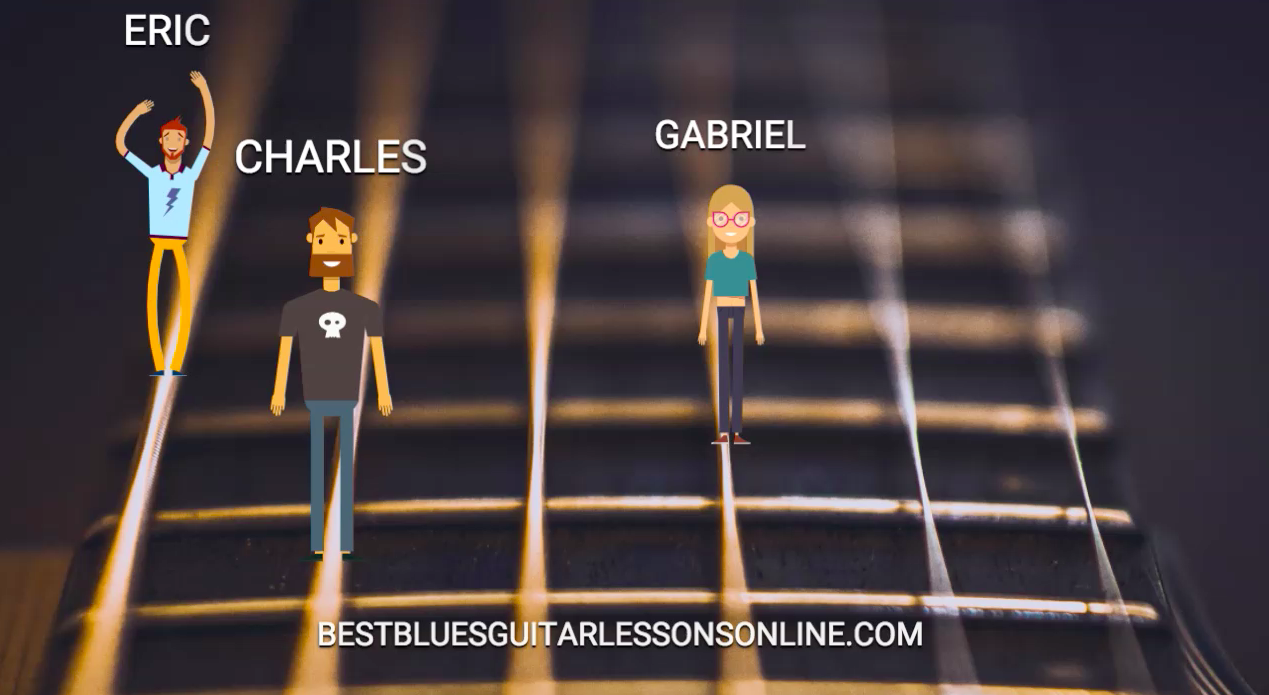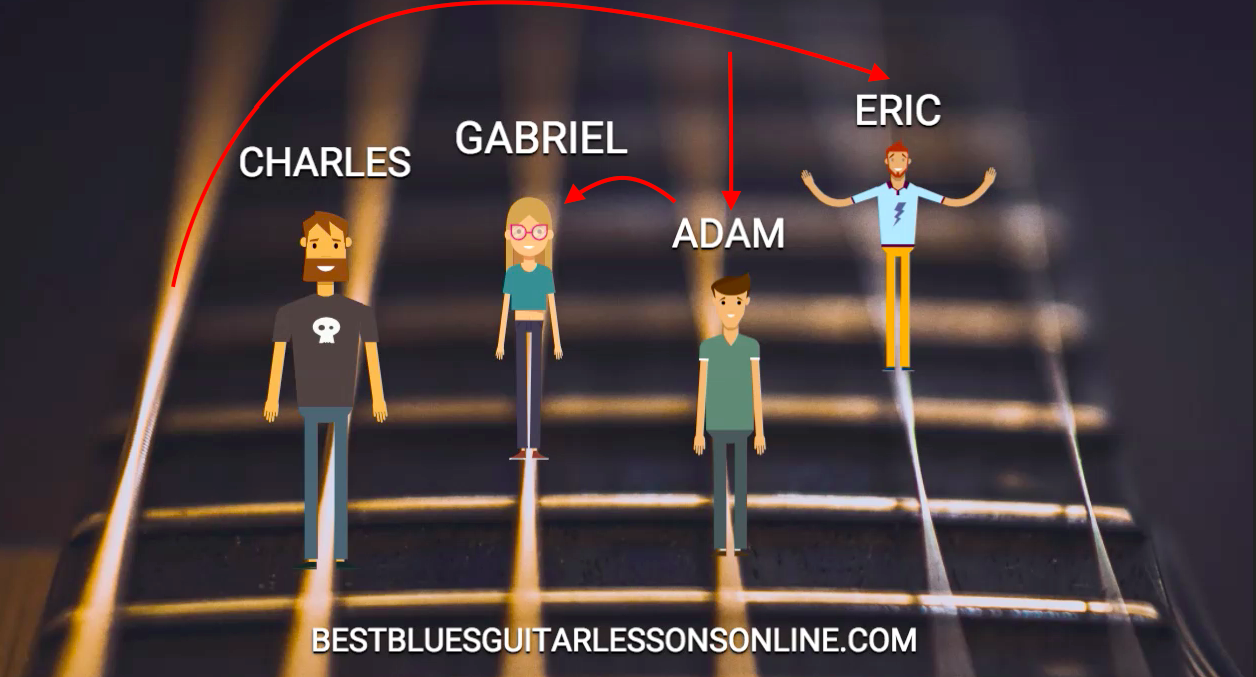Chord Changes Mastery Unveiled
The Best Exercise To Fix All Your Guitar Chord Switching Problems Once And For All
By Antony Reynaert
Tired of messing up these fast blues chord changes?
A lot of aspiring guitar players practice their chord changes over and over, but when it comes down to performing them perfectly, they FAIL…
 So what is the biggest problem standing in your way to complete mastery over your chord changes?
So what is the biggest problem standing in your way to complete mastery over your chord changes?
One of the biggest guitar myths proclaims that with a lot of practice, one day you will become a good guitar player.
To be honest, nothing is further away from the truth!
Even though a lot of repetition when practicing is important, it is NOT the main factor that will determine if you'll become a great guitarist.
If you practice your chord changes over and over, but you keep on making the same mistakes (mostly unconscious), you can practice as long as you want, the only result will be bad playing habits that will ruin your chord changes until you STOP practicing in this way!
In the next video I teach exactly one simple, but highly effective exercise that is the fastest way to fix any guitar chord switching problem once and for all.
This is without a doubt the best strategy to clear the way to mastery over your blues chords!
PS: When you are done watching, continue reading below the video where I share my entire chord switching mastery model.
The skill for being able to switch between any two particular chords is far more methodical than most people think.
Fact is, the common problem of sloppy and inconsistent finger transitions when going from one chord to the next, will always be present if you don’t have the right practice strategy.
To get your fingers to move seamlessly and in a cohesive manner from one chord to the next, several important things need to happen.
The Ultimate Chord Changing Exercise - How To Master Even The Most Difficult Chord Changes
Step 1: First of all, you have to determine the particular chord changes you want to improve.
To make your chord changes flourish, you have to preserve approximately 5 minutes for each chord change per day.
So if you only have 30 minutes to practice a day, you better take one chord change so that you don't fill your entire practice routine with this one exercise (because there are of course other important aspects besides chord changes to focus on in your practice routine).
Step 2: After you've determined which chords you want to work with, the only preparation left to do before you can jump into practicing is to name all your fretting hand fingers.
For example:
- Index finger -> Eric
- Middle finger -> Gabriel
- Ring finger -> Charles
- Pinky finger -> Adam
Depending on the chords, the placement of the thumb needs to be taken into account as well.
The thumb often has to perform very important tasks such as muting the low e string. Other times we need the thumb placed nicely behind the neck to be able to make certain stretches with the other fingers or even to fret certain notes.
Step 3: After you have given your fretting hand fingers a name, you will perform and repeat the chord switches between 20 and 100 times for each set of chords.
Decide for yourself what you can handle. How many seconds it takes to move your fingers from one chord to the next is not important.
What is however of crucial importance is that the execution must be PERFECT!
While you perform your chord switches you will give your fingers 'orders'. Think of this as if you are the choreographer and your fingers are the dancers on the neck of the guitar.
So you can say things like this during the execution of the chord changes:
"Eric, you are going to jump from string 6, to string 2, 3rd fret."
"Charles, while Eric is making this leap, you stay at the exact same position because that is where we need you for the next chord. Do not jump up while Eric is moving because that would be a waste of motion."
"Gabriel, at the same time you jump from the 3rd string, 6th fret to the 4th fret on string 4."
"Adam, we need you to come down to the dancing floor (a.k.a the guitar neck) and fall gently on the 3rd string, 5th fret."
As a 'choreographer' you will also need to keep an eye on individual fingers. The first time you’ll monitor your index finger, then you change your focus to your middle finger, etc. This phenomenon is called ‘focus of rotation’ and is highly important.
As you shift your focus between fingers, you have to instruct them as well.
For example:
"Eric, you come down a bit later than the rest. Try to descend on the string a little earlier."
"Gabriel, you’re doing well, just try to stay a little closer to the neck when you jump from one position to the other."
Points Of Attention During The Chord Changing Exercise

- Stay as close to the neck as possible when changing fingers.
- Don't lift your fingers if it's not necessary. If they have to return to the same position, make them stay in contact with the string. This also applies to fingers that land on the same string. For example, if you have to jump from the 2nd fret to the 3rd fret on the same string, do not try to lift your finger, but keep it in contact with the string.
- Ensure that all fingers arrive at the new chord at the same time.
- Practice regularly in slow motion. This is often the only way for all fingers to work together. If you are unable to make your fingers work together, chances are that you will still be performing the movements too quickly.
Finish Strong And Be Guaranteed For Success
If you have performed between 20 and 100 chord switches (depending on what you can handle) with deliberate execution (*) you are ready for the day.
(*) Deliberate execution = giving your fingers verbal instructions while they are performing the switches.
Studies have proven that it takes between 3,000 and 5,000 repetitions to burn a finger movement in your body's muscle memory. So the next time you tell yourself that you cannot do a technique or transition or that you think you may be missing talent, remember this statement and start practicing again.
Take Your Blues Rhythm Playing To The Level Of The Blues Masters
 If you like this chord switching exercise and you want to take it one step further I recommend downloading my Free Blues Rhythm eBook.
If you like this chord switching exercise and you want to take it one step further I recommend downloading my Free Blues Rhythm eBook.
In this eBook I expand on how the masters of blues guitar construct and develop their blues rhythm guitar skills.
You get insight into how you can get stuck out of the rut that many aspiring blues guitarists find themselves in when it comes to playing rhythm guitar.
Feel like your blues guitar skills aren't progressing? Stuck with the same old patterns and don’t know how to break out of it? Free your guitar playing with my Essential Blues Lesson For Soloing.


